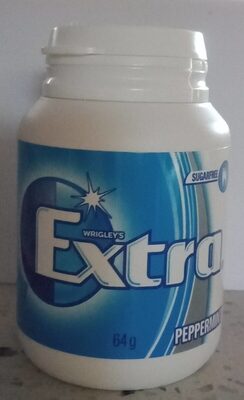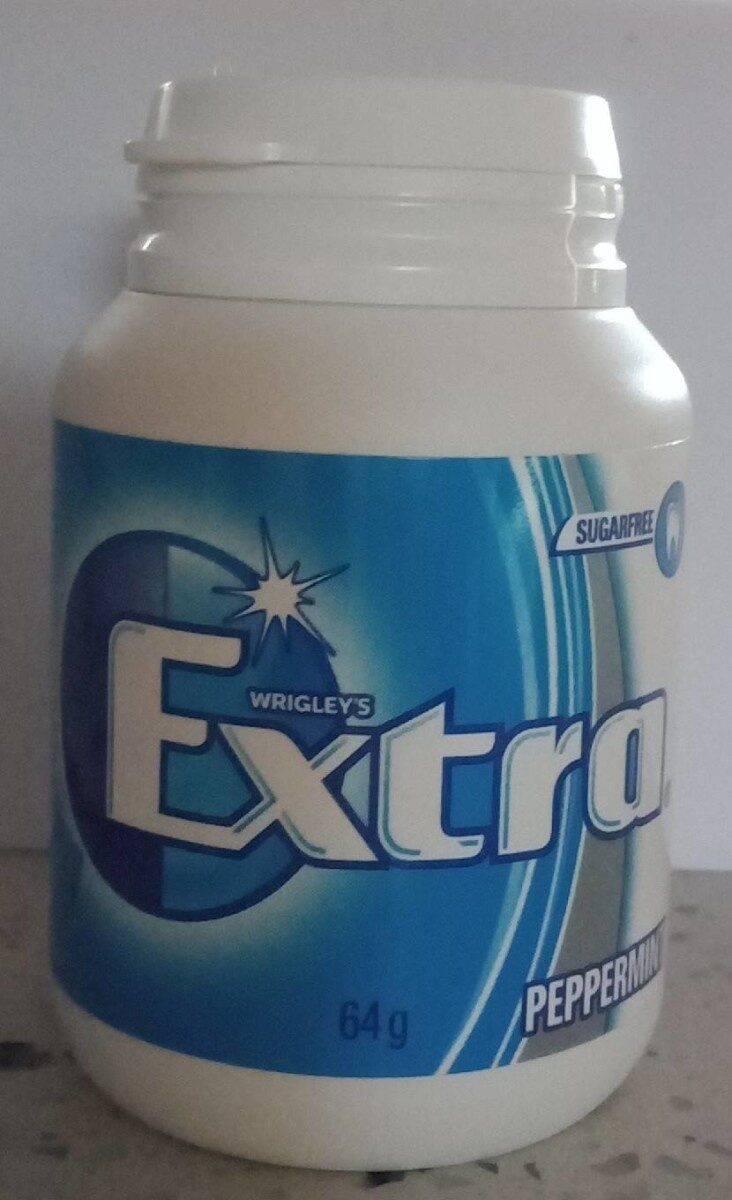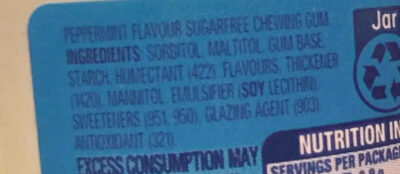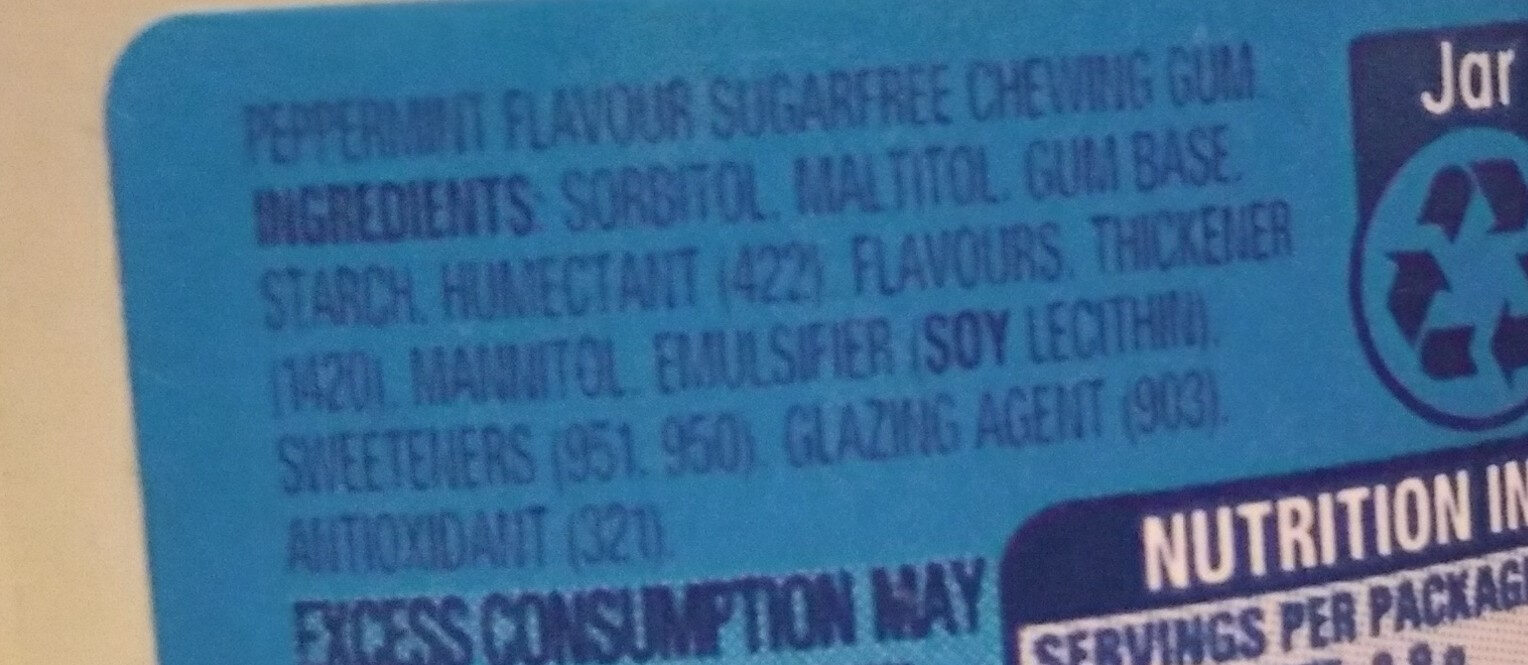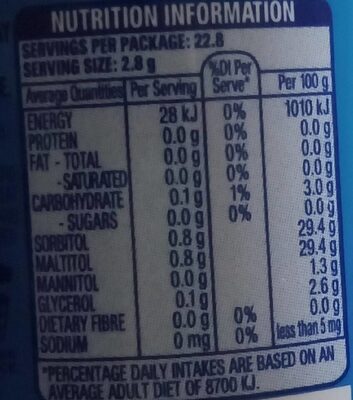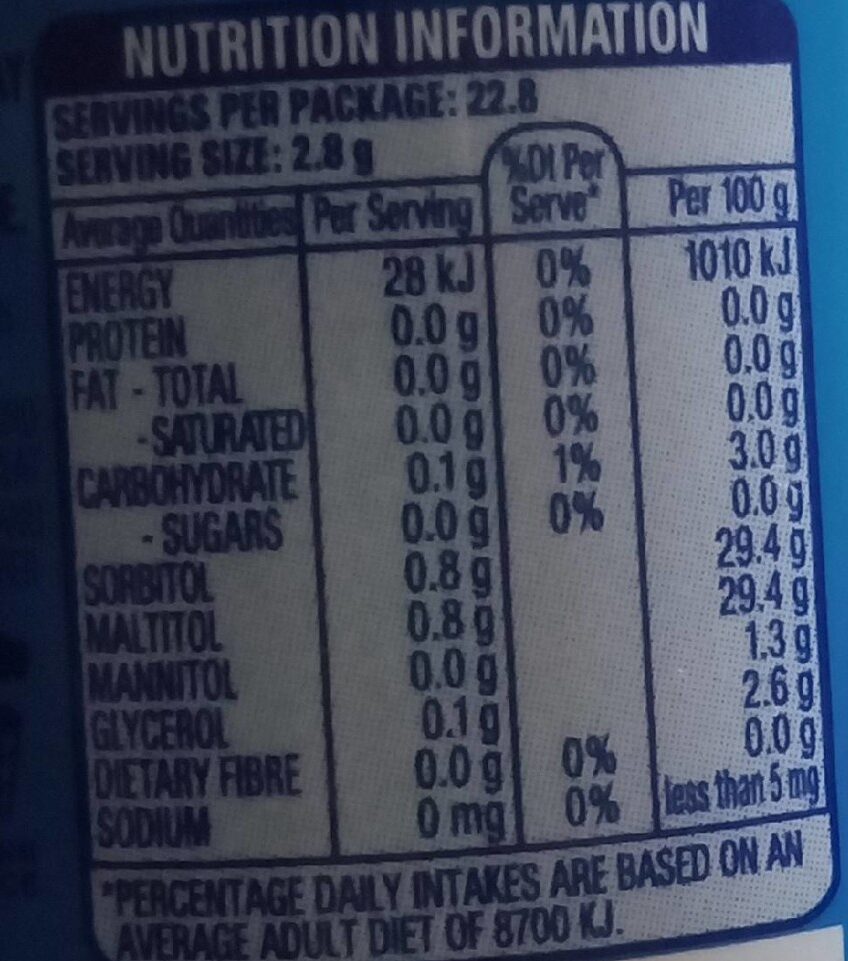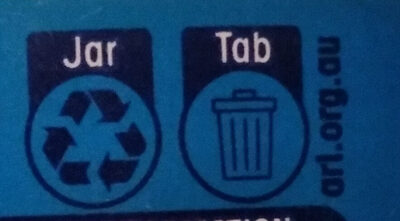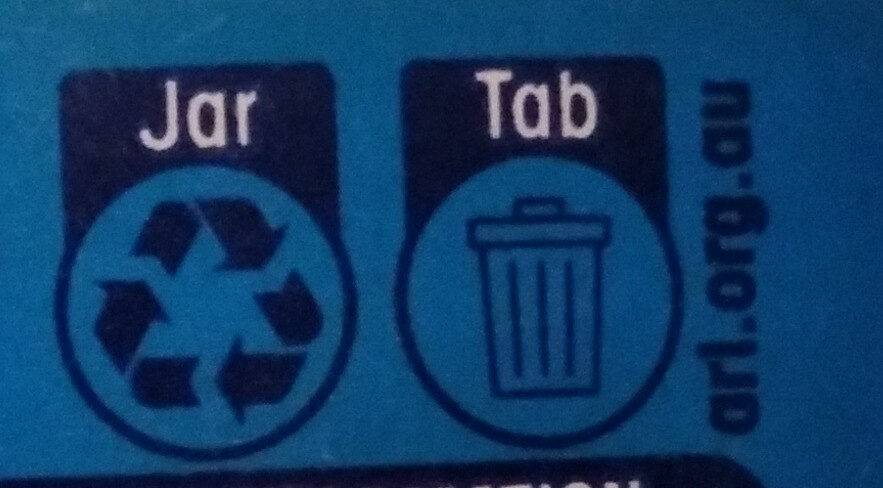Extra Peppermint - 64g
This product page is not complete. You can help to complete it by editing it and adding more data from the photos we have, or by taking more photos using the app for Android or iPhone/iPad. Thank you!
×
Barcode: 9300613108638 (EAN / EAN-13)
Common name: Peppermint flavour sugarfree chweing gum
Quantity: 64g
Categories: Snacks, Sweet snacks, Confectioneries, Chewing gum, Sugar-free chewing gum
Labels, certifications, awards: Low or no sugar, No sugar
Stores: Woolworths, Coles, Officeworks
Countries where sold: Australia, New Zealand
Matching with your preferences
Report a problem
Data sources
Product added on by foodvisor
Last edit of product page on by chevalstar.
Product page also edited by archanox, clockwerx, ecoscore-impact-estimator, inf, kiliweb, lcmortensen, openfoodfacts-contributors, packbot, tasja, yuka.sY2b0xO6T85zoF3NwEKvlkduXOjukw7iNR_ummG0ytqxC5O2RMxU-LP2FKs.
